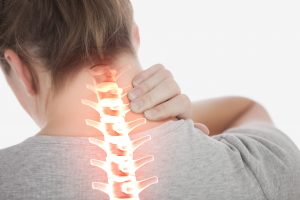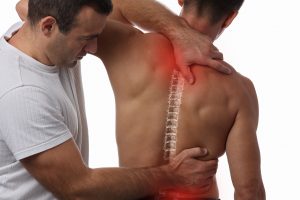The truth about headaches, and how we can cure them
Introduction
Headaches are frustrating things to deal with and can lead to poorer quality of life and time away from work and play. They are a common reason for time off work, affecting 48.9% of the population and accounting for 10% of GP visit . They are an issue that we see patients struggling with at the clinic.
There are many myths about headaches and we find they aren’t always effectively treated. We aim to give you clear and concise information on what they are and how they may be cured [without surgery].
The successful treatment of headaches often involves lifestyle factors as well as the mechanics of the body, which is something often missed by others. Experience in dealing with headaches is key to finding the solution, so we recommend seeing one of our Osteopaths or Physiotherapists for an initial consultation, to do this book here.
What are The Different Types of Headaches?
The three main types of headaches I’ll discuss on here are known as primary headaches (headaches that aren’t as a result of an underlying disease, such as a stroke or infection). I’ll split them split into three types to help you get an idea which type you may be suffering with:
- Tension-type
- Migraine
- Cluster headaches
Tension-Type
Tension-type headaches are the most common form of headache, with around 38% of the population suffering with them. What causes them isn’t clear despite a lot of studies on the condition. What we do know is that for infrequent tension-type headaches, the scalp and neck muscles seems to be mainly implicated. For more chronic versions of the condition, pain pathways in the brain stem become too active, making this the reason the headaches turn chronic according to this research article.
These headaches are typically mild to medium in intensity. Our patients commonly describe a feeling of pressing or tightening as well as an underlying vague ache, commonly on the side of the face but also behind the eyes.
Assessing these headaches involves looking for tenderness around the head, neck and shoulders, ideally producing the same type of headache the person usually feels. If this can be done, we know the area that needs to be treated so we focus on that location until the symptoms dissipate.
Usually, this type of headache will get significantly better within a month, but everyone responds differently to treatment, so this is meant as a guideline. Treatment is usually centred around reducing the head and neck tension, whilst eliminating any lifestyle factors that may be inhibiting recovery.
To find out more, please read our article on Tension Headache.
Migraines are headaches that usually cause moderate to severe one-sided headaches. They are less common than tension-type headaches, affecting around 12% of the population, but can be more complex.
Migraines appear to have a genetic component, with there being a 3x increase in migraines with those who have relatives who also suffer with them, and up to 75% likelihood if both parents suffer with them.
Alongside this, there are several lifestyle factors that can trigger a migraine, I’ve listed the most common with the percentage likelihood that the activity triggered the migraine:
- Stress (80%)
- Hormonal changes during menstruation, ovulation and pregnancy (65%)
- Skipped meals (57%)
- Weather (53%)
- Too much or too little sleep (50%)
- Perfumes, cologne, petrol smells (40%)
- Neck pain (38%
- Light exposure (38%)
- Alcohol consumption (38%)
Before an attack occurs, some patients can expect an aura, which is a warning feeling that includes flashing lights, tingling, blurry vision, déjà vu and detachment. Most patients describe this as gradual lasting under an hour, with the full pulsating headache kicking in eventually. The full headache can also result in light and sound sensitivity, nausea and vomiting which lasts anywhere from a few hours to days. Most patients we see have to retreat to a dark, quiet room to sleep them off, which is an incredible inconvenience and something I have a lot of sympathy towards.
Cluster Headaches
Cluster headaches are thankfully quite rare, only affecting 0.1% of the population, but are very damaging to the patient’s quality of life. They are called cluster headaches because sufferers experience them in clusters, with attacks occurring up to 8 times a day, for around 15-180 minutes, but then sufferers may go without an attack for months or years. Patients typically describe severe attacks mainly around one eye or the side of the head, with some experiencing swelling or drooping of the eye also. Unlike the first two headache types, this affects males more than females at around a 3:1 ratio, but women typically get more nausea and vomiting with the attacks. Smoking, drinking alcohol, stress, hot weather and, sometimes, exercise can trigger one.
Again, there is some debate as to what causes them but the consensus seems to suggest the nerves giving sensation to the face, called the trigeminal nerve, can get excited and initiate an attack due to increased sensitivity. This sensitivity may be due to neck joint dysfunction and tightness, or the patient might be one of the unfortunate few that have a slightly more sensitive nervous system. You can read more about that in our blog, Fibromyalgia.
If you choose to seek professional help and see us, the first thing we do is establish a diagnosis. This diagnosis will give us the blueprint on what we can do to help, which will include both manual therapy as well as lifestyle changes. These lifestyle changes will be difficult to implement at first, but are very effective and more economical in yielding long-term benefits.
The problem with these headaches is that when they turn chronic, they do get harder to resolve and they will have an impact of quality of life. We routinely see patients presenting with other problems, who then mention headaches in a throw-away comment because they believe that they will never go away, but more often than not we’re able to help them. Finding a reputable therapist who is patient-centred rather than money-centred is critical, as some patients have been convinced that monthly appointments are the only way of managing the symptoms, whereas there might be a more permanent remedy around the corner.
For any further questions, please don’t hesitate to ask:
0161 236 3726
info@movementandwellbeingclinic.co.uk
Ed Madeley M.Ost


